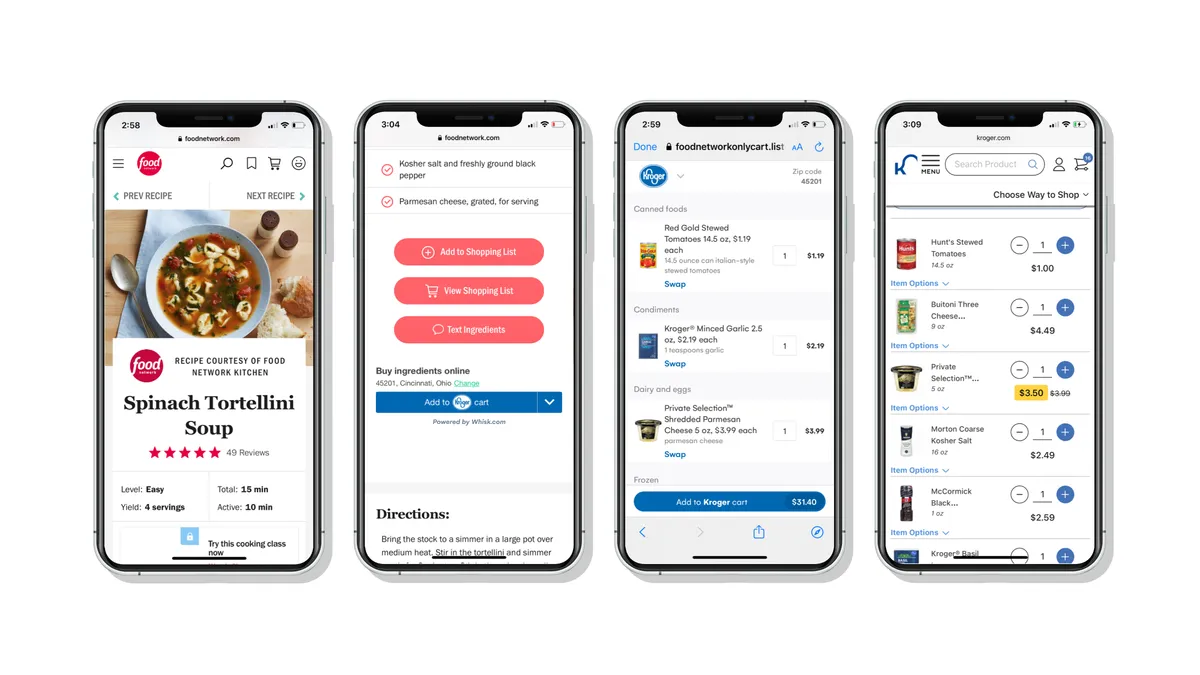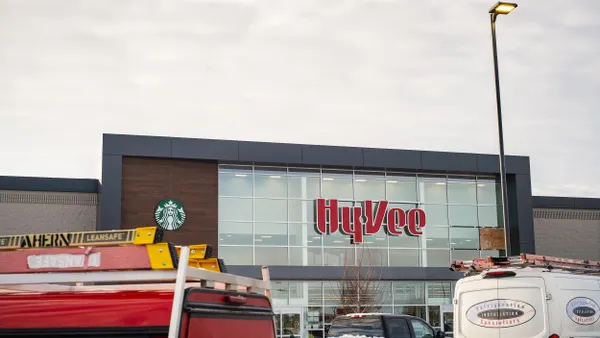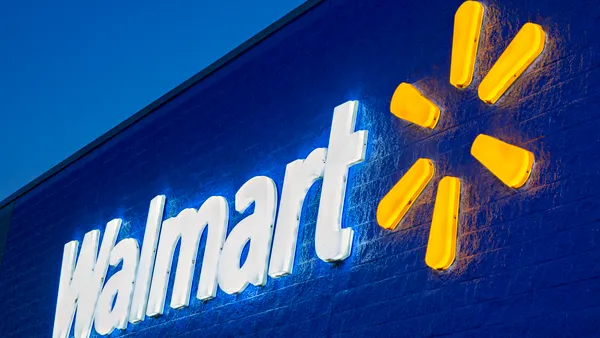Dive Brief:
- Kroger is collaborating with smart food platform Whisk to allow users of the service in 35 states to shop recipe ingredients from Kroger stores for delivery or pickup, said Nick Holzherr, the head of Whisk.
- Owned by Samsung Next, Whisk converts recipes into shoppable lists, using artificial intelligence and natural language processing technology to check that the ingredients match what’s available at local Kroger stores.
- The partnership with Kroger soft-launched in April, a Whisk spokesperson said in an email. Kroger has increasingly turned to AI as the pandemic continues to make at-home cooking easier for consumers, with the Whisk partnership aiming to integrate online shopping with meal prep.
Dive Insight:
Kroger keeps expanding its presence in the shoppable recipe realm. By teaming up with Whisk, Kroger has become a purchase option for the more than 500 million monthly recipe interactions on Whisk’s platform, according to the company.
With the pandemic prompting more people to cook at home and prepare meals in advance, the supermarket chain, along with other retailers, is looking to streamline the process for people to get meals to their tables.
Last week, Kroger launched Chefbot, an AI-based digital tool that turns tweeted pictures of consumers' products into recipe suggestions. While it’s only available on Twitter at the moment, Kroger plans to add the feature to its mobile app. In September, Kroger teamed with Dinner Daily, a personalized meal planning service, on grocery pickup and delivery orders in 24 states for members of the service.
By partnering with Whisk, Kroger appears to be continuing to address shoppers’ concerns about coronavirus exposure when grocery shopping and the challenges they face in finding different meal ideas and the right ingredients.
Founded in 2012 and acquired by Samsung Next last year, Whisk partners with third-party apps and sites, converting recipes into shoppable lists. Users can also save and share recipes and create meal plans. “Really what we’re trying to solve at Whisk is helping users go from inspiration to action,” Holzherr said.
When turning shoppable recipes into orders, Whisk's API ensures accurate inventory and product matching, Holzherr said, and takes into consideration different terms to describe the same products, what types of products the user normally buys and the required quantity: “If you need for a recipe three tomatoes, you don’t want a box of 22 tomatoes being delivered.”
Whisk reaches consumers through its mobile app, website, browser plugins, Samsung smart appliances, voice assistants like Samsung Bixby and Alexa, and integrations into major food sites including Food Network and BBC Good Food — meaning Kroger can now reach Whisk users in “all of these places,” Holzherr said.
Holzherr said Whisk and Kroger have “been in touch for a number of years” and that the partnership was solidified during the last few months. Whisk has also teamed up with Walmart, Amazon and Instacart, along with U.K. grocers Asda and Tesco.
“Every single time that we have a new player that uses our platform, Kroger will be integrated automatically there and, obviously, it benefits the rest of our network too because the rest of our network cares about how many retailers their users can go and purchase at,” Holzherr said.
Prior to the Kroger partnership, Holzherr said Whisk saw a surge at the start of the pandemic in March, with increased usage across the platform for seven straight weeks, five times the number of people saving recipes and 30% more items on shopping lists.
“I thought the logic would be that retailers love this, but actually what happened was they were overwhelmed … they were essentially asking us to turn off the integrations because we were sending them too many customers,” Holzherr said.
While Whisk tracks whether users are on mobile or desktop devices, Holzherr said the next step is to find out where people are — whether at home or the store or work — when they get inspired by recipes and to pursue “connected kitchens” to keep making cooking easier for consumers.












